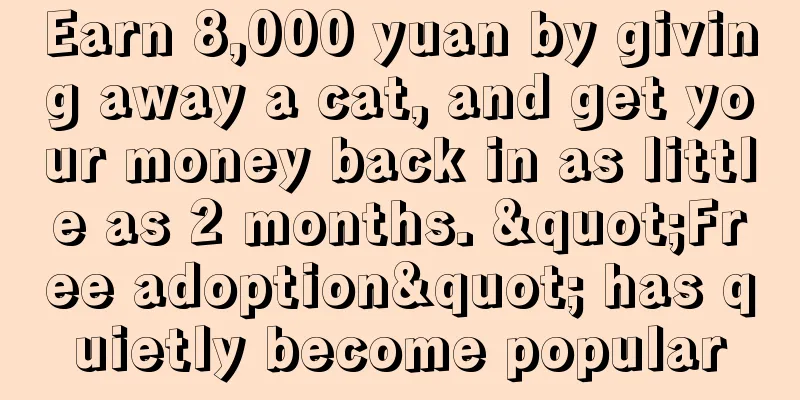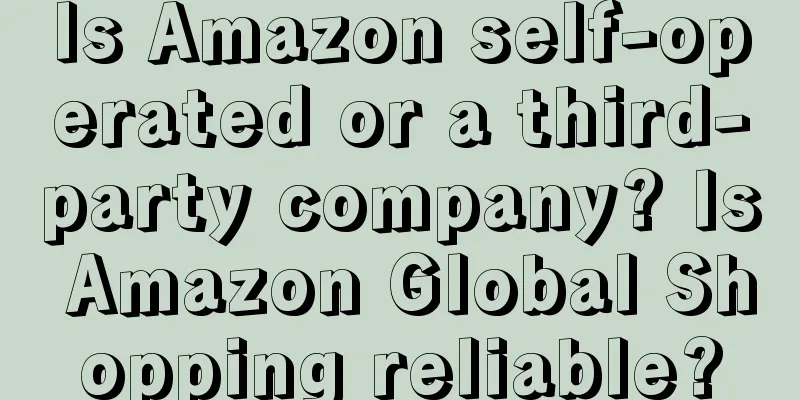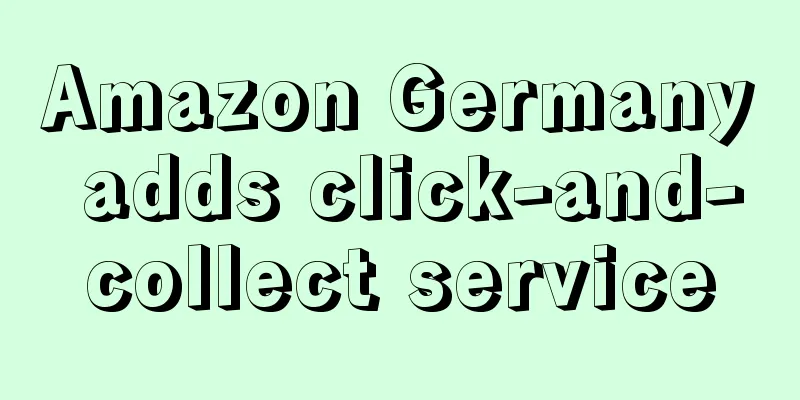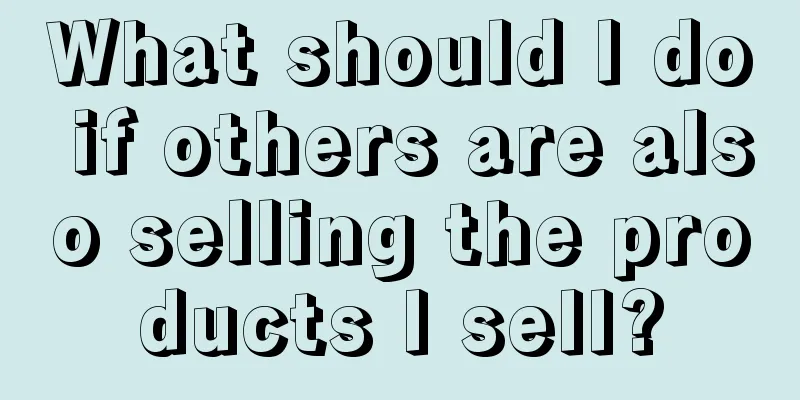Earn 8,000 yuan by giving away a cat, and get your money back in as little as 2 months. "Free adoption" has quietly become popular

Would you be tempted to adopt a cat for free without paying a penny? During the summer vacation, some shopping malls and department stores offer free pet adoption, which has quietly become a powerful tool for attracting customers. In the constant temperature pet boxes, there are cats of various breeds, including Maine Coons, Ragdolls, British Shorthairs and other popular breeds. The merchant claimed that he was a cattery and that one could adopt a cat for free by signing a monthly food purchase agreement for six months to two years. He also promised that the pet would be absolutely healthy. These free adoptable pets have attracted countless potential pet owners, but where do these cats come from? How do businesses that do not seek to make a profit achieve profitability? Why does this model emerge? 1. From “paying for a cat” to “giving away a cat for free”As the pet economy continues to prosper, the traditional pet store business model is quietly changing. In the past, pet shops mainly sold pets, and customers had to pay a high one-time fee to take their favorite pets home. Customers would then have to purchase the pet's supplies themselves. As the pet market becomes more prosperous, new entrants have flocked in, making the "involution" phenomenon in the pet industry more and more prominent, and pet shop owners are not having an easy time. A cattery owner in Xi'an told reporters: "Competition in the pet market has reached a fever pitch. Whenever a pet-seeking message appears on a social platform, hundreds of businesses will respond in an instant. This oversupply situation has put us under unprecedented pressure on pricing. The economic downturn has squeezed consumers' purchasing power, especially young people who have just entered society and have low salaries. They have limited funds and find it difficult to afford the high cost of buying pets. This is also one of the important reasons for our poor performance." Nowadays, pet shops have become the hardest hit area for closure. Faced with this situation, pet shop owners are eager to change and find a breakthrough point for profitability. Pet food manufacturers are also having a hard time. With more and more new competitors entering the market, the market share is being divided up bit by bit. According to the "China Better Life Survey 2022-2023" report released by CCTV, the proportion of pet food consumption in pet consumption has declined. They urgently need to improve marketing efficiency and reach users accurately, preferably in one step, directly reaching pet-owning families. In this case, the two industries "hit it off". You give away cats for free, and I sell food for a fee. You help me sell products, and I let you make the difference to achieve long-term benefits. The business model of "free adoption + monthly payment for pet food" came into being. Mr. Dong, a post-90s generation, is a pioneer of the "free adoption + monthly pet food payment" model in Chongqing. He told reporters: "Under this model, we have achieved diversified profits." Mr. Dong said, "We cooperate with local pet product agents and can get prices far lower than the official online stores of the brands. We then sell them to people who adopt cats from me at a reasonable price. In fact, we make money from the price difference of the supply chain, not the direct income from pet adoption." To improve efficiency and reduce costs, Mr. Dong also revealed one of their key strategies: "We adopt a sales model without inventory. When customers place an order for pet supplies, the order information is directly passed to our suppliers, who then ship directly to the customers, greatly reducing our inventory pressure." The key to Lingchongguan's profitability lies in its close alliance with local pet supplies agents. Mr. Dong further explained that the core of the "pet food monthly payment" model is not the pet cat itself, but the construction of the channel. Most of the domestic cat sources are concentrated in Shenyang, and it is not difficult to find cheap pet sources. The key to this model is the acquisition of traffic, which is the basis for user accumulation and the core element to maintain market competitiveness. Mr. Dong said bluntly: "Only with objective traffic and a stable user base can we have the confidence to negotiate prices with pet product agents and gain more profits for ourselves." To this end, the business strategy is no longer to wait for customers to come to the store, but to take the initiative online. Create a communication matrix through Tik Tok By attracting attention through "free adoption", arousing the interest of pet lovers, and widely disseminating adoption information on social media, the public's attention has been successfully directed to private traffic pools such as WeChat. In the carefully crafted private environment, merchants not only show the image of professional and caring pet care experts, but also regularly publish rich and diverse information, including pet care knowledge, product recommendations, and real feedback from users. 2. How long does it take to get your money back after giving away a cat?The "free adoption + monthly pet food payment" model is essentially an efficient integration of resources. It breaks the boundaries of the traditional pet sales model, closely links multiple links such as pet adoption, pet product sales and financial services, and forms a closed-loop ecosystem. In this system, the resources of all parties can be fully utilized and optimally allocated, thus achieving a win-win situation. Since it is a win-win situation for all parties, how much profit can the pet center, which is the most core one among them, make? The reporter learned from a pet factory that the profit margin of the "pet food monthly payment" model launched by the factory in the field of pet supplies sales has remained stable at between 50% and 60%. What is even more surprising is that even the cost price of a high-quality ragdoll cat is controlled at an extremely low level, and it can be purchased for only a few hundred yuan. Profit margin of pet products in a pet factory Assuming that the user chooses to pay 598 yuan per month and signs a 24-month purchase agreement, based on this profit margin, the profit that Lingchongguan earns from the user's payment each month is far more than 300 yuan. If the cost of a ragdoll cat is only 600 yuan, the cost can be recovered in just two months. During the entire 24-month contract period, users will pay a total of 14,352 yuan. All of this money will be used to purchase pet supplies at Lingchongguan. Based on a 60% profit margin and after deducting the initial cost of the Ragdoll Cat of 600 yuan, the net profit achieved will far exceed 8,000 yuan. However, Mr. Dong, the person in charge of several pet parlors in Chongqing, gave a different explanation. He pointed out that for those businesses that pursue high-quality services, the period from introducing cats to achieving profitability often takes 6 months to a year or even longer. "If it is a Devon cat or a cat of better appearance, it will take at least 7 months to get back the investment, but the subsequent income is very stable." He stressed that although the cost of a ragdoll cat seems low, the process from introducing a cat into a store to finally making a profit is not just a simple matter of buying and selling cats, but a series of complex investments and meticulous services. Before the cat is delivered to the customer, the store needs to conduct strict health screening, vaccination and provide necessary daily care. The team invested a lot of manpower and material resources, including forming a professional product selection team (5-6 people), a large after-sales customer service team (more than 20 people) and business personnel (up to 37 people). These labor costs increased the company's expenses, but Mr. Dong firmly believed that this was the basis for winning customer trust and support and building long-term brand value. Mr. Dong said that from 2019 to now, the multiple stores he operates have given away more than 6,000 pets in total. These contracts adopt a flexible monthly payment method, with monthly payment amounts ranging from 198 yuan to 598 yuan. The contract period is flexibly set according to the specific needs of the customer, with the shortest being one year and the longest being up to two years. There are currently more than 1,700 pet contracts being executed. 3. How can the company develop further if it gives away cats for free?While many industries are still struggling in the "price war", the pet industry can still go against the current. According to the "Pet Industry Blue Book: 2023 China Pet Industry Development Report" released by Euromonitor International, Asia Pet Research Institute and other institutions, last year, there were 190 million dogs and cats in my country. It is estimated that by 2028, the number of dogs and cats in my country will increase to 210 million, of which the number of cats is expected to exceed 110 million as pet preferences change. At the same time, the surge in the number of pets has also stimulated the demand for pet products, especially pet food. In 2023, the market size of China's pet food industry has jumped to third place in the world. The "free adoption + monthly payment for pet food" model has indeed cleverly tapped into the money-making trend. As one of the pioneers of the "free adoption + monthly pet food payment" model in China, Yaoshe Cat House has a wide range of pet products in its mall. The mall offers 13 cat food products, 4 of which are self-created and self-operated brands, and the cat litter category is completely occupied by Yaoshe Cat House's self-created and self-operated brands. Yaoshe Cat House proposed the concept of "0 Yuan Cat Raising" in 2020, and the initial practice was mainly achieved through cooperation with other pet product brands. With the accumulation of market experience and the strengthening of brand strength, Yaoshe Cat House officially launched its self-developed products in early 2022. Only one year after its launch, its total transaction volume has exceeded 20 million, which marks that it has built an independent and complete pet product supply chain system and achieved more profits and value within the brand. At the same time, Mr. Dong, a leader in Chongqing's pet retail industry, also showed a similar strategic vision. Although there is a gap in the number of stores between him and Yaoshe Cat House, Mr. Dong is not satisfied with the role of a middleman, but decisively launched his own brand of cat food. Mr. Dong admitted that the original intention of launching his own cat food was to increase profit margins. Faced with big brand cat food on the market, such as Royal Cat Food, the cost of purchasing from regional agents is high, resulting in limited profit margins. This year, Yaoshe Cat House has also embedded a cooperative pet hospital in its mini program and provided users with cleaning and care services, etc. It can be seen that it is expanding the boundaries of resource integration. Through the development trajectory of Yaoshe Cat House, we can foresee the future development direction of "Pet Food Monthly Payment", that is, through deeper and broader resource integration, complete the active exploration of independent brands in order to pursue maximum profit retention. In the future, if you adopt a cat from a pet store, the pet store may become a one-stop service provider for your cat's all-round life. From the cat's daily "eating, drinking, defecating and urinating" supplies to the medical care, bathing, haircutting services it needs, and even occasional boarding needs, the pet store will take care of everything for you. However, as the "pet food monthly payment" model gradually becomes popular and develops in depth, the negative issues hidden behind it have gradually surfaced. The delivery of sick cats, the need to pay in installments after the cats have passed away, and the uneven quality of pet supplies have caused this model to be controversial and criticized on the Internet. In the face of criticism from netizens, pet houses are actively self-regulating and improving. For example, Yaoshe Cat House has taken a number of measures to protect the rights of adopters, including ensuring that cats are quarantined for 7 days after receiving two vaccinations before being displayed in stores, promising to refund the account balance if the pet dies of illness within two years, and providing a one-to-one after-sales group service, with veterinarians in the group to promptly answer adopters' questions and provide professional guidance. These measures have undoubtedly strengthened consumers' confidence in the "free adoption" model and contributed to the healthy development of the industry. Faced with the stigmatization of the industry, Mr. Dong expressed his helplessness and emotion. He emphasized that although the threshold of the pet market is low, it takes great effort and investment to really do well. He hopes to gain recognition and trust from users through high-quality services and after-sales guarantees. Mr. Dong said: "We can't deny the entire industry because of the behavior of a few bad businesses. As long as the industry works together and strengthens supervision, the pet salon will surely usher in a healthier and more sustainable development. |
Recommend
Unveiling Jingxi’s self-operated business: Creating a “Pinduoduo” within JD.com
In the territory of e-commerce giant JD.com, a new...
What happens if an independent website infringes upon copyright? How to avoid infringement?
In the Internet age, more and more people choose t...
What are the benefits of joining Alibaba International Station? What are the requirements?
AliExpress is the only online trading platform und...
520 high-level copywriting, every sentence is love
This article selects the 520 themed banner copy fr...
January's marketing cases are out, giving you a burst of inspiration
January is coming quietly. In this month with a st...
Thinking about making the brand bigger
This article mainly analyzes the eight elements of...
What should I do if my Amazon account is linked? How to operate it?
Amazon is a very popular platform recently. Many m...
HEYTEA FENDI co-branded drinks are being snapped up: Mini Program crashes multiple times, scalpers double the price
HEYTEA has partnered with luxury brand Fendi to la...
How to write a new product promotion plan on Amazon? What are the tips?
There are more and more merchants opening stores o...
Which African cross-border e-commerce platform is better? How to choose?
Now many domestic e-commerce merchants are very op...
Bawang Tea Princess: A consumer product that takes Internet thinking to its extreme
In mid-August, Bawang Chaji announced the "ca...
Zheng Qinwen won the championship on the field, and Bawang Chaji won the gold medal off the field
As the Tokyo Olympics is in full swing, Bawang Cha...
A collection of copywriting, there is always one suitable for you
How to write a copy? Let's take a look at the ...
10,000-word analysis | How to achieve global conversion through people-oriented marketing on Xiaohongshu
How can brands conduct people-oriented marketing o...
How does Amazon offer free shipping? Does Amazon offer shipping insurance?
As one of the world's largest e-commerce platf...









